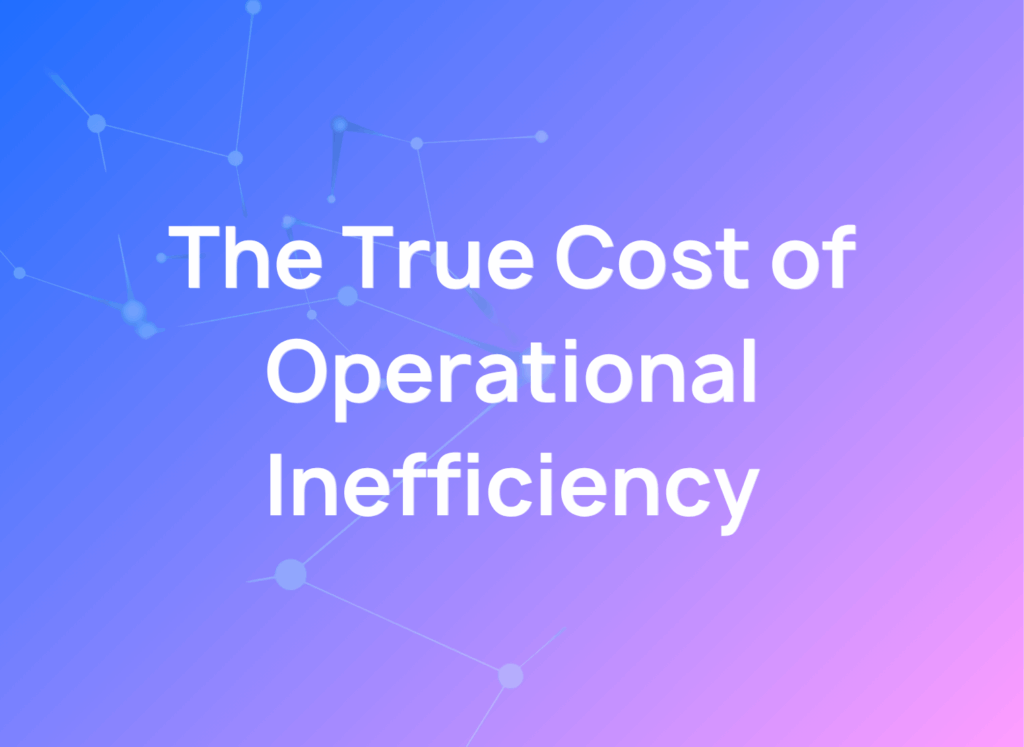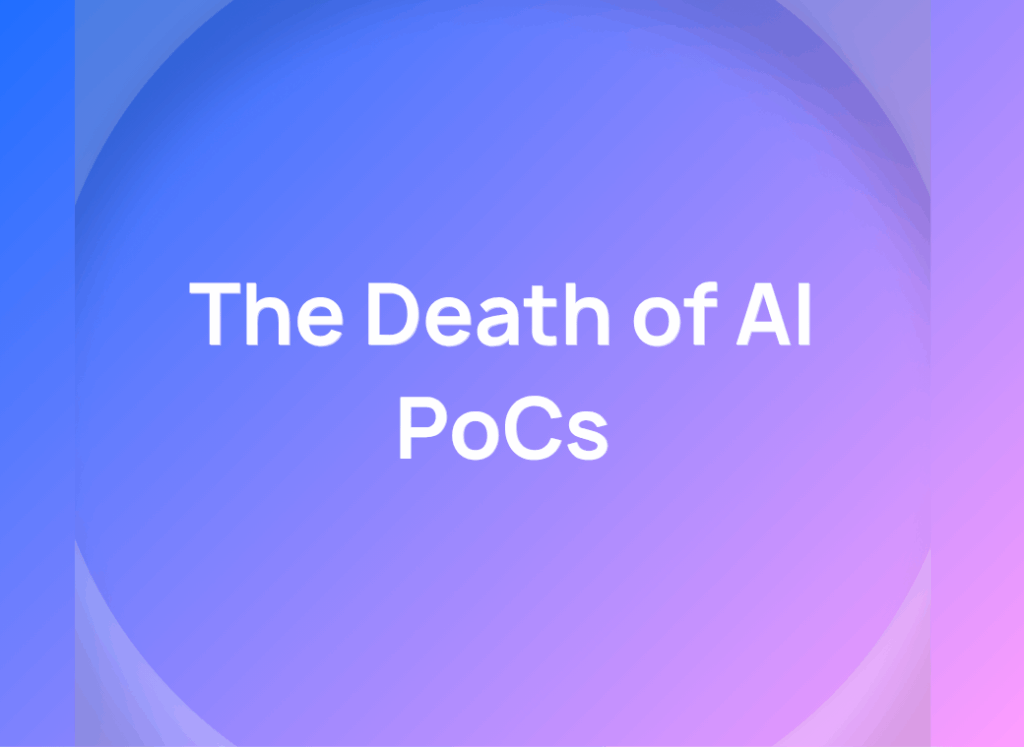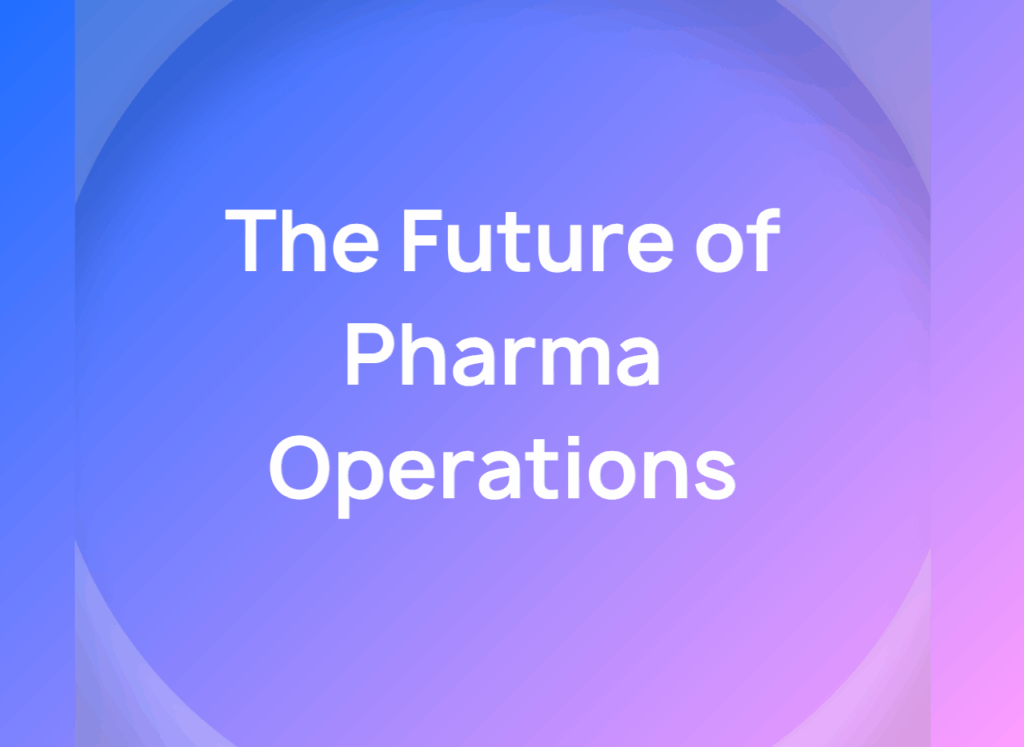The Enterprise AI Glossary: Key Terms You Need to Know
The Enterprise AI Glossary: Key Terms You Need to Know
The language of artificial intelligence is evolving rapidly, especially within the enterprise. Terms like "Digital Worker" and "AI agent” are no longer just buzzwords; they represent fundamental shifts in how businesses automate and create value. Understanding this new vocabulary is crucial for leaders aiming to build a more efficient, resilient, and autonomous organization.
This glossary provides clear, enterprise-focused definitions for the essential concepts powering the next generation of business automation. We will break down what each term means, why it matters for your organization, and how causaLens is pioneering its real-world application.
Digital Workers
A Digital Worker is an AI-powered software entity designed to autonomously execute complex, end-to-end business workflows. Unlike simple bots, they can handle tasks that require judgment, reasoning, and interaction with multiple enterprise systems.
Why it matters:
- They move beyond automating single tasks to automating entire business processes.
- They can operate 24/7 with consistent quality and full auditability.
- They free up human employees to focus on strategic initiatives rather than repetitive work.
At causaLens, Digital Workers are AI colleagues built to handle complete workflows. These are not simply assistants; they are autonomous employees that act across your systems without constant supervision. They are designed to work within predefined enterprise guardrails, delivering outcomes that are compliant, measurable, and always ready for an audit.
AI Agent
An AI agent is an autonomous software program that perceives its environment, makes decisions, and takes actions to achieve one specific goal. It works by using sensors - or digital interfaces - to gather information, a reasoning engine to process data and review outcomes, and actuators (such as APIs or software commands) to execute tasks. AI agents can act independently or collaborate with humans, adapting their behavior based on feedback or new data.
Why it matters:
- Automates discrete tasks with a high degree of accuracy and consistency.
- Forms the building blocks of more complex systems, like Digital Workers and multi-agent architectures.
- Adaptable across industries for repetitive, judgment-based, or data-intensive work.
Multi-Agentic System
A multi-agentic system consists of multiple autonomous AI agents that interact and collaborate within a digital environment to achieve the automation of an entire business process. Each agent operates independently but can coordinate actions for system-wide outcomes.
Why it matters:
- Enables distributed problem-solving for tasks too large or complex for a single agent.
- Increases system flexibility and scalability in dynamic enterprise environments.
- Supports robust automation of end-to-end workflows by leveraging specialized expertise.
At causaLens, Digital Workers are built as multi-agentic systems - composed of multiple specialized AI agents that collaborate to deliver end-to-end business outcomes. Each agent contributes unique reasoning or domain expertise, and together they operate as an intelligent, adaptive workforce.
LLM
A Large Language Model (LLM) is an advanced AI system trained on vast amounts of text data to understand, generate, and reason with natural language. It can summarize information, draft content, and respond to queries in ways that mimic human communication.
Why it matters:
- Can generate large quantities of information or text very quickly.
- Accelerates knowledge work by interpreting unstructured information at scale.
- Forms the foundation for more capable, context-aware AI applications across industries.
LLMs are a core component of our Digital Workers - but we go further. Using our proprietary causal reasoning framework, CLAIRE, we ground LLM outputs in logic and real-world context, transforming them from probabilistic text generators into dependable reasoning engines that deliver trustworthy, auditable business decisions.
Judge Agents
Judge Agents are an aspect of our reliability IP - they rigorously evaluate the output of every step in a workflow, ensuring that there are no mistakes made during the process. They act as an internal layer of quality control, meaning that managers don't have to worry about each and every statement made by a Digital Worker. This is essential in meeting enterprise standards for accuracy and compliance.
Why it matters:
- Provides real-time validation of AI decisions before they reach production systems.
- Reduces error rates by continuously monitoring for logical, factual or procedural inconsistencies.
- Establishes accountability and audibility across complex autonomous workflows.
This is an essential part of the reliability framework that differentiates us from generic AI systems. They evaluate every output against business rules and domain-specific criteria - ensuring that decisions are not only correct, but explainably correct.
RPA
Robotic Process Automation (RPA) is a technology that uses software “bots” to mimic human actions in structured, rules-based tasks. These bots interact with digital systems the same way a person would - clicking buttons, entering data, and transferring information between applications - but they follow predefined logic and cannot reason or adapt.
Why it matters:
- Automates repetitive, high-volume tasks.
- Works well in transactional workflows, but cannot handle dynamic data.
RPA represents the first wave of automation - valuable but limited. Our Digital Workers go far beyond scripted bots by reasoning, adapting, and making decisions across complex, multi-system workflows.
Digital Labor
Digital labor refers to AI-driven systems that replicate human cognitive and decision-making abilities to perform work autonomously. It extends the capacity of organizations far beyond what a human-only workforce can achieve - processing information and acting across complex workflows in real time.
Why it matters:
- Scales knowledge work instantly, allowing enterprises to handle volumes and complexity no human team could be expected to match.
- Reduces cost and error by executing decisions consistently and transparently across systems.
- Frees human employees to focus on strategic, creative and client-driven work.
Digital labor is produced in our Digital Worker Factory - where AI workers are designed to execute entire business workflows reliably and transparently. Each unit of digital labor is auditable and aligned with enterprise outcomes, delivering compounding value over time.
System of Work
A System of Work is a centralized governance and management layer for an AI workforce. It serves as the operating system for digital labor, allowing enterprises to host, manage, monitor, and scale their Digital Workers securely and efficiently. Think of it as an AI orchestration platform.
Why it matters:
- It provides a single source of truth for all AI-driven automation.
- It ensures that all Digital Worker activities are compliant and auditable.
- It enables organizations to measure performance and ROI for their digital workforce.
It provides a chief-of-staff overview of all AI operations, with real-time performance monitoring, human-in-the-loop controls, and built-in audit trails. Layering on top of your existing tech stack, it orchestrates work without disruption and creates a feedback loop for continuous improvement, ensuring your Digital Workers become more effective over time.
Digital Worker Factory
The Digital Worker Factory is an industrialized model for rapidly creating, deploying, and scaling enterprise-grade Digital Workers. It uses pre-built templates and proven methodologies to deliver reliable automation far faster and more cost-effectively than traditional development approaches.
Why it matters:
- It drastically reduces the time-to-value for new automation projects.
- It creates a significant return on investment by standardizing the creation of digital labor.
- It replaces the need for disparate SaaS tools and risky outsourcing arrangements.
This is changing the economic equation for automation. It is how you build an AI workforce that pays for itself in weeks, not years. By leveraging our “Blueprint” model, the Factory can deploy production-ready Digital Workers within 24 hours, always aiming for 5x ROI. It moves enterprises beyond proofs-of-concept to building a scalable AI workforce that eliminates tool sprawl and reduces dependency on new hires.
Blueprints
Blueprints are configurable, pre-built templates for high-value business workflows. They contain the core logic, data integrations, and compliance rules needed to deploy a Digital Worker for a specific function. We are industry agnostic and can do this across different enterprises.
Why it matters:
- Blueprints capture best practices from dozens of successful customer deployments.
- They accelerate deployment by providing a foundation that is 80% ready out-of-the-box.
- They ensure reliability and consistency for processes in highly regulated industries.
These are what make our Digital Workers reliable at enterprise scale. Instead of starting from scratch, we begin with an industry-tested template that has been proven in the field. This foundation is then configured to your unique systems of record and processes, allowing us to build and deploy a custom Digital Worker in a fraction of the time. Blueprints are the fastest path from an idea to a live, value-generating Digital Worker.
Causal Reasoning
Causal reasoning is the ability of an AI system to understand not just what is happening in data, but why. It identifies the true drivers behind outcomes - distinguishing correlation from cause - so decisions are based on evidence, not patterns.
Why it matters:
- Enables AI to make reliable, explainable decisions instead of probabilistic guesses.
- Reduces model errors by grounding predictions in real-world cause and effect.
- Improves trust and performance in critical business processes.
Causal reasoning is what our agents are built on. Through our CLAIRE framework (Causal Logic in AI Reasoning), every Digital Worker is equipped to reason about the world as humans do - understanding cause and effect, adapting to change, and delivering decisions that stand up to scrutiny.
Digital Workforce
A digital workforce is the collective of AI systems that autonomously perform business tasks across an organization. It operates as a coordinated layer of digital labor — executing workflows, making decisions, and interacting with enterprise systems just as human teams would, but with greater speed and reliability.
Why it matters:
- Expands operational capacity without proportional increases in headcount or cost.
- Ensures consistent performance across regions, time zones, and processes.
Our digital workforce is orchestrated and governed through our System of Work - ensuring every Digital Worker operates within enterprise guardrails, is fully observable, and delivers measurable outcomes.
Process Automation
Process automation uses technology to streamline and orchestrate business operations that would otherwise rely on manual effort. It brings data, decisions, and execution into a single flow - reducing human error and accelerating how work moves across teams and systems.
Why it matters:
• Eliminates repetitive, error-prone steps that slow down business performance.
• Improves transparency and collaboration by centralizing process data and progress.
• Delivers faster, more consistent outcomes while freeing people to focus on higher-value work.
At causaLens, we extend process automation beyond static rules - combining automation with causal reasoning and adaptive intelligence so entire workflows can run autonomously, reliably, and in full compliance with enterprise standards.
Intelligent Automation
Intelligent Automation (IA) blends technologies such as artificial intelligence, business process management, and robotic process automation to make decision-making more efficient and scalable. It goes beyond simple task execution to automate processes that require cognitive capabilities.
Why it matters:
- It automates workflows that were previously too complex for traditional automation.
- It improves operational efficiency by handling both structured and unstructured data.
- It enables businesses to make faster, data-driven decisions at scale.
While traditional definitions focus on combining different tools, causaLens views Intelligent Automation as a core capability of a single Digital Worker. Our Digital Workers inherently possess intelligence, using machine learning and reasoning capabilities to run complex processes. This isn't about patching tools together; it's about deploying a single, cohesive AI colleague that understands context and makes decisions.
"Intelligent automation (IA), sometimes called cognitive automation, is the use of automation technologies—artificial intelligence (AI), business process management (BPM) and robotic process automation (RPA)—to streamline and scale decision-making across organizations." - IBM
Workflow Automation
Workflow automation is the ability for business processes to operate autonomously from start to finish. Unlike traditional tools that rely on rigid, pre-set instructions, workflow automation powered by Digital Workers brings intelligence and reasoning into the process. These systems don’t just automate individual tasks - they manage the entire workflow, from intake to outcome. The result is automation that can think and make informed decisions, rather than simply follow a script.
Why it matters:
- It reduces manual effort and minimizes the risk of human error.
- It ensures processes are executed consistently and in a timely manner.
- It increases visibility into operational performance.
AI Productivity Tools
AI productivity tools are applications that use artificial intelligence to help individuals complete tasks more efficiently. This includes tools for drafting text, summarizing information, or generating ideas.
Why it matters:
- They can significantly speed up content creation and data analysis for individuals.
- They serve as powerful assistants for brainstorming and research.
- They augment human capabilities, allowing one person to accomplish more.
Most AI productivity tools are assistive, not autonomous - they help a person work faster but can't be trusted to execute business decisions independently. At causaLens, these tools evolve into fully autonomous Digital Workers. They are not assistants; they are AI employees that perform high-value workflows end-to-end, creating output that is compliant, auditable, and production-ready without constant user input.
Operational Efficiency
Operational efficiency is the measure of an organization's ability to deliver products or services in the most cost-effective manner possible while maintaining quality. It focuses on maximizing output from a given set of inputs.
Why it matters:
- It directly impacts profitability by reducing waste and cutting costs.
- It improves customer satisfaction by speeding up service delivery.
- It frees up resources that can be reallocated to growth and innovation.
For causaLens, operational efficiency is not about incremental gains; it's about transforming throughput and accuracy simultaneously. This approach creates exponential leverage by scaling reliable digital labor, turning hours of manual work into minutes of autonomous execution and moving beyond linear improvements.
AI Copilot
An AI copilot is a virtual assistant that integrates with applications to help users perform tasks more efficiently through natural language prompts. It acts as a partner to enhance human productivity.
Why it matters:
- It makes complex software features more accessible through conversation.
- It accelerates tasks like coding, writing, and data analysis.
- It reduces the learning curve for new tools and platforms.
An AI copilot is a valuable assistive tool, but it is limited because it cannot fully automate a process, end-to-end. It operates at the task level. In contrast, our Digital Workers go beyond copiloting to become autonomous AI employees. They operate at the workflow level, executing entire processes and making decisions within the governed System of Work. While copilots make individuals faster, Digital Workers make entire organizations self-scaling.
"Simply put, an AI copilot is a virtual assistant that can use data and computation to help you get things done more efficiently..." - SAP
AI Governance
AI governance refers to the policies, procedures, and frameworks required to ensure AI systems are developed and used safely, ethically, transparently, and in compliance with regulations. Governance ‘erects guardrails, ensuring that AI operates within legal and ethical boundaries, in addition to aligning with organizational values and societal norms’ (Palo Alto Networks).
Why it matters:
- It builds trust with customers, regulators, and internal stakeholders.
- It mitigates risks related to bias, privacy, and security.
- It provides a structured approach for accountability and explainability in AI-driven decisions.
At causaLens, AI governance is not an afterthought; it is built into the architecture of our platform. It is embedded at every layer through the System of Work, ensuring every action taken by a Digital Worker is observable, traceable, and fully accountable. This concept of "governed autonomy" means you can deploy intelligent, self-directed AI without ever compromising on compliance, reliability, or trust.
MCP
MCP (Model Context Protocol) is a two-way bridge that connects AI systems with external tools and data sources. It allows an AI not only to retrieve information but also to act on it - securely interacting with platforms like CRMs, communication tools, or development environments.
Why it matters:
- Transforms AI from a passive reasoning system into an active operational layer that can execute actions across systems.
- Standardizes how AI connects to enterprise tools, improving both security and scalability.
- Enables truly context-aware automation by giving AI direct access to the data and environments it needs to work effectively.
MCPs are a key part of how our Digital Workers operate across the enterprise. They provide safe, governed connectivity between AI and business systems - so Digital Workers can read, decide, and act in real time without data movement or manual intervention. Originally developed by Anthropic and now widely adopted across the AI ecosystem, MCPs make it possible for enterprise AI to be both powerful and compliant.
Human-in-the-loop
Human-in-the-loop (HITL) refers to a design approach where people remain actively involved in specific stages of an automated or AI-driven process. It ensures that human oversight, judgment, and accountability are embedded in systems that otherwise operate autonomously.
Why it matters:
- Maintains control and compliance in workflows where full automation isn’t appropriate.
- Combines human intuition with AI precision, improving both quality and trust.
- Enables organizations to adapt AI outputs to real-world context and evolving policies.
Human-in-the-loop functionality is built into every Digital Worker. Enterprises can define when human review, approval, or escalation is required - ensuring auditability and alignment with governance standards, without sacrificing speed or automation benefits.
Multimodal AI
Multimodal AI refers to systems that can understand and generate information across different types of data - whether that is text, video, images or audio. Instead of analyzing one form of input in isolation, these models combine signals from multiple modalities to form a deeper and more contextual understanding of the world.
Why it matters:
- Enables richer, more human-like perception by linking language, visuals and sound into a unified reasoning process.
- Improves accuracy and reliability by drawing insights from several data sources at once.
- Powers advanced applications like interactive assistants and intelligent monitoring.
Multimodal reasoning allows our Digital Workers to integrate structured enterprise data with unstructured sources like documents, transcripts, and imagery. This holistic view lets them interpret context and cross-check evidence.
Autonomous Enterprise
An autonomous enterprise is an organization where core business processes are run reliably by an AI-driven workforce, with humans shifting their focus from micromanagement to strategic oversight.
Why it matters:
- It creates a highly scalable and resilient operating model.
- It dramatically reduces operational costs and improves process accuracy.
- It enables the organization to adapt to market changes with unprecedented speed.
It moves beyond layers of software and manual oversight to a model where autonomous AI executes entire workflows. Humans can be freed up for strategic direction while the digital workforce handles the execution of rote, manual tasks.
Scalable AI
Scalable AI refers to artificial intelligence systems that can be replicated across an entire enterprise without requiring custom, one-off development for each new use case.
Why it matters:
- It allows organizations to realize value from AI across multiple departments, not just in isolated projects.
- It avoids the technical debt and risk associated with managing dozens of siloed AI models.
- It ensures a consistent and predictable return on AI investments.
We achieve this through our Blueprint model and the Digital Worker Factory. Blueprints for proven workflows can be adapted and deployed to new teams or geographies in days, not months. Because every Digital Worker is governed within the same System of Work, scaling AI means multiplying outcomes, not multiplying risk.
Foundational Model
A foundational model is a large-scale AI model trained on diverse datasets to learn general patterns, reasoning, and knowledge that can be adapted to many downstream tasks. It provides the cognitive base from which specialized AI systems - like domain-specific agents or Digital Workers - are built.
Why it matters:
- Serves as the underlying intelligence that powers a wide range of AI applications.
- Reduces development time and cost by enabling fine-tuning instead of training from scratch
- Advances the reliability and versatility of AI systems across different domains.
We enhance foundational models with causal reasoning, transforming them from statistical learners into dependable decision engines. This approach allows our Digital Workers to perform critical, high-stakes workflows in regulated industries with precision, transparency, and trust.
A Digital Worker is more advanced than a traditional RPA bot. While RPA automates simple, rules-based tasks, a Digital Worker uses AI to autonomously execute complex, end-to-end workflows that require judgment and reasoning, acting more like a human employee than a simple script.
A Digital Worker is multi-agentic and purpose-built for enterprise workflows, combining reasoning, compliance, and auditability. While all Digital Workers are AI agents, not all agents have the advanced orchestration, governance, and enterprise readiness that define Digital Workers.
A Digital Worker is an autonomous AI entity designed to execute full business workflows, making choices and delivering outcomes. An LLM (Large Language Model) generates or interprets text but doesn’t act independently or execute workflows - Digital Workers use LLMs as components within broader, goal-driven automation.
Our System of Work provides a central governance layer with built-in audit trails, configurable guardrails, and human-in-the-loop controls. This ensures every action taken by a Digital Worker is observable and accountable, providing the framework for deploying AI safely at an enterprise scale. AI should not be a “black box” where you cannot work out how an automation came to a certain conclusion, everything should be monitored and controlled.
To create an AI agent, define the task or workflow you want to automate, set clear goals, and provide access to the right data and systems. With causaLens, you can use pre-built Blueprints and the Digital Worker Factory to rapidly design, deploy, and govern multiagentic systems tailored to your business needs.
An AI agent is an autonomous software program that perceives its environment, makes decisions, and takes actions to achieve a specific goal. But while an agent can get you from A to B, a Digital Worker goes much further - operating across A to Z with full observability, reliability, and governance. Built for complex enterprise workflows, Digital Workers are not just reactive automations but causally intelligent systems that reason through processes, integrate across multiple platforms, and provide transparent, auditable decision-making.





